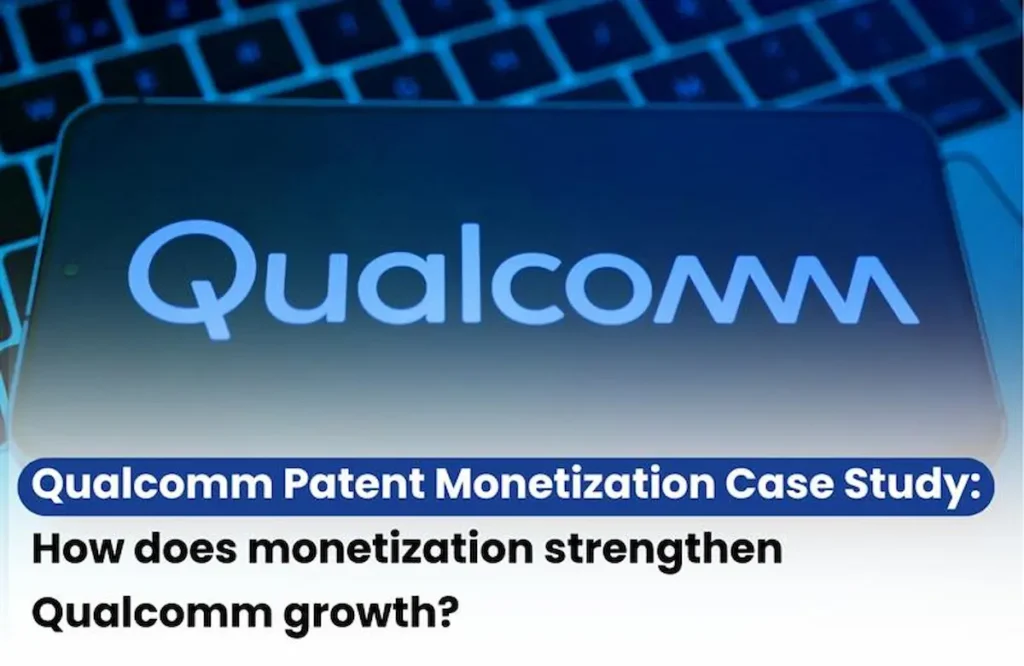
Patent monetization has always been one of the smartest ways for companies to make money from their ideas without having to build an entire business around them. Instead of just using a patent to make products, companies can license or sell their technology and earn steady revenue while boosting their brand value at the same time. must know about Qualcomm IP Case Study. For anyone new to this concept, it’s worth looking at companies that have done it right — and Qualcomm IP Case Study is one of the best examples out there. The company has turned its patents into a powerful growth engine, showing how smart IP management can lead to huge success. Keep reading to find out how Qualcomm’s approach to patent monetization helped shape its journey and strengthen its place in the tech world.
What Is Patent Monetization and How Did Qualcomm Use It to Drive Growth?
To really understand Qualcomm’s case study, it helps to first look at what patent monetization actually means. In simple terms, it’s the process of making money from your patented technology by letting others use it — kind of like a business deal where both sides benefit. The patent holder earns revenue, and the buyer or licensee gets access to the technology they need.
Now, let’s see how Qualcomm took this concept and turned it into a core part of its business strategy. Known for leading innovation in wireless technology, Qualcomm designs and manufactures powerful Snapdragon processors that run in countless smartphones and connected devices around the world. But what really sets Qualcomm apart is its massive patent portfolio — especially in cellular technologies like 3G, 4G, and 5G. But instead of relying only on selling chips and manufacturing hardware, Qualcomm took a smarter route — it started monetizing its patents. Rather than just focusing on physical products, the company realized the real value was in the technology itself. By licensing its patented innovations to other companies, Qualcomm created a steady stream of income without having to build or sell every device on its own. This move not only boosted profits but also positioned Qualcomm as a global leader in wireless technology — earning money every time someone uses its technology, even if they’re not using its chips.
Today, Qualcomm owns more than 320,000 patents across 70 countries, and many of these are Standard-Essential Patents (SEPs) — meaning they’re crucial for any device that connects to modern wireless networks. This gives Qualcomm enormous bargaining power, since companies like Apple, Samsung, Xiaomi, and Oppo all need to license Qualcomm’s technology to make their devices work. By smartly managing and monetizing these patents, Qualcomm has turned its intellectual property into a steady, high-margin revenue stream — proving that innovation can be just as profitable as it is groundbreaking.
Read Also: OPPO Grants Global 5G SEP License to Leading Chinese Carmaker
What Methods Did Qualcomm Use to Build Its Patent Monetization Model
Now, let’s take a closer look at the methods Qualcomm uses for patent monetization and how it’s made the strategy so successful.
- The company’s main approach is through patent licensing, where it lets other manufacturers use its wireless communication technologies in exchange for royalty payments. This is handled through its Qualcomm Technology Licensing (QTL) division, which manages hundreds of deals with smartphone brands, network equipment companies, and other major tech players around the world.
- But Qualcomm doesn’t stop there — it also uses cross-licensing agreements, where it trades patent rights with other big companies to keep access to important technologies and maintain balance in the industry.
- On top of that, Qualcomm invests heavily in research and development (R&D), constantly adding new innovations to its already massive portfolio. Its patents cover everything from Snapdragon processors and 5G connectivity to AI and the Internet of Things (IoT).
Conclusion
Qualcomm’s success story proves how powerful patent monetization can be when done strategically. By focusing on patent licensing, cross-licensing, and continuous innovation, the company has turned its vast patent portfolio into a steady source of growth and influence. Rather than relying only on selling products, Qualcomm built a business model where its ideas work for it — generating revenue, strengthening its market position, and shaping the future of wireless technology worldwide.









